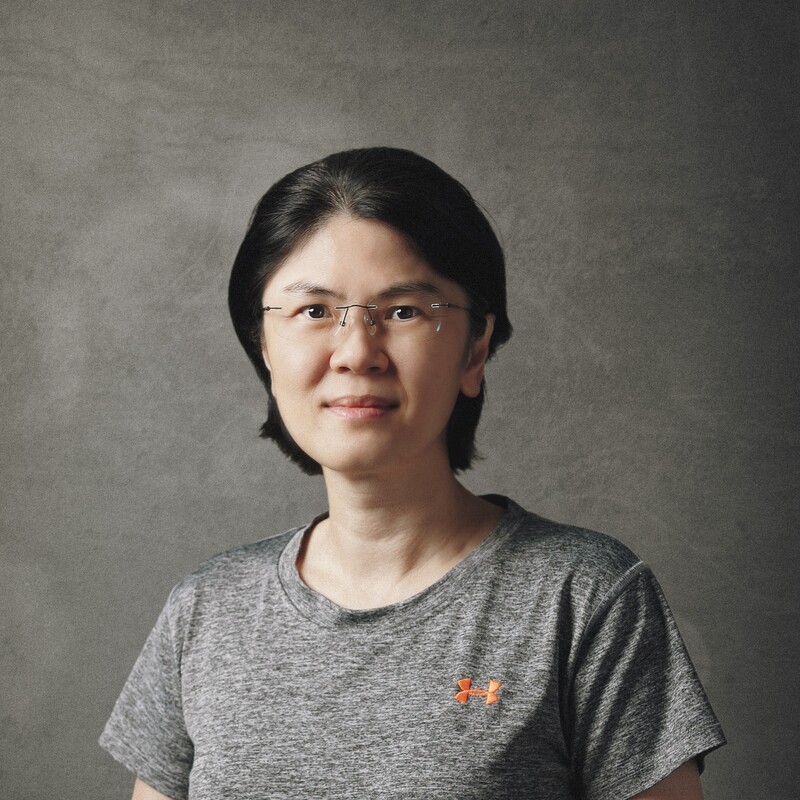
Ma, Lay-Sun (馬麗珊)
Associate Research Fellow
- Ph.D., Molecular and Biological Agricultural Science, National Chung Hsing University and Academia Sinica (TIGP), Taiwan
- Molecular mechanisms of plant-fungi interactions
- laysunma@gate.sinica.edu.tw
- laysunma@as.edu.tw
- +886-2-2787-1146 (Lab: R416)
- +886-2-2787-1145 (Office: R415)
- Lab Website
- Academia Sinica Archive
- ORCID
- Web of Science (WOS)
- Google Scholar
Effectors in Plant-Fungus Interactions
UMAydis@IPMB

Corn Smut Fungus Ustilago maydis
U. maydis is a dimorphic fungus that causes smut disease on all aerials part of maize by forming large tumors on infected tissues. It grows as haploid yeast-like cells outside the maize host. Upon sensing plant environmental cues, it undergoes a transformation into a parasitic filamentous stage of its life cycle. This developmental process, involving the formation of infective structures facilitating penetration, tumorigenesis, and eventual sporogenesis, is complex and irreversible and needs to be precisely regulated.

Sensing Environmental Signals and Counteracting Host Apoplastic Immunity
The ability of sensing environmental cues enables U. maydis to switch from vegetative to filamentous growth, direct their orientation toward nutrient sources, and rapidly respond to plant defense by coordinating the secretion of large arsenal of effector proteins in consecutive waves to complete their life cycle inside the host.
Our Focus: Effectors
Given the crucial role of effectors in disease progression, delving into their biochemical functions is vital for understanding fungal virulence mechanisms. Analyzing effectors comprehensively will provide insights into fungal virulence and plant defense mechanisms, advancing our understanding of plant-pathogenic basidiomycete interactions, and potentially guiding crop disease management strategies.
Our research interests
To uncover the invasion strategies of U. maydis and prevent the onset of initial infection, we focus on studying effectors located at the interaction interface of maize-U. maydis, aiming to reveal the following mechanisms:
- Sensing and adaptation mechanisms
- Effector regulatory mechanisms
- Mechanisms by which fungal cells suppress apoplastic immunity
- John E, Chau MQ, Hoang CV, Chandrasekhar N, Bhaskar CK, and Ma LS*(2023). Fungal cell wall-associated effectors: Sensing, Integration, Suppression, and Protection. MPMI. Mar;37(3):196-210.
- Lin YH#, Xu MY#, Hsu CC#, Damei FA, Lee HC, Tsai WL, Hoang CV, Chiang YR, and Ma LS* (2023). Ustilago maydis PR-1-like protein has evolved two distinct domains for dual virulence activities. Nat Commun. 14, 5755.
- Ma LS*, Tsai WL, Kalunke MR, Xu MY, Lin YH, Damei AF, and Lee HC (2023). Maize Antifungal Protein AFP1 Elevates Fungal Chitin Levels by Targeting Chitin Deacetylases and Other Glycoproteins. mBio. Mar 22; e0009323.
- Hoang VC, Bhaskar CK, and Ma LS* (2021). A Novel Effector Vp1 Promotes Fungal Colonization and Virulence of Ustilago maydis. J. Fungi, 7(8): 589.
- Ludwig N, Reissmann S, Schipper K, Gonzalez C, Assmann D, Glatter T, Moretti M, Ma LS, Rexer KH, Snetselaar K, and Kahmann R* (2021). A Cell Surface-Exposed Protein Complex with an Essential Virulence Function in Ustilago maydis. Nat. Microbiol. 6: 722–730.
- Yu M, Wang YC, Huang CJ, Ma LS, and Lai EM* (2021). Agrobacterium tumefaciens Deploys a Versatile Antibacterial Strategy to Increase Its Competitiveness. J. Bacteriol. 203(3): e00490-20.
- Ma LS, Wang L, Trippel C, Mendoza-Mendoza A, Ullman S, Moretti M, Carsten A, Kahnt J, Reissmann S, Zechmann B, Bange G, and Kahmann R* (2018). The Ustilago maydis repetitive effector Rsp3 blocks the antifungal activity of mannose-binding maize proteins. Nat. Commun. 9(1):1711.
- Ma LS#, Pellegrin C #, and Kahmann R* (2018). Repeat-containing effectors of filamentous pathogens and symbionts. Curr. Opin. Microbiol. 46:123-130 (#equally contributed).
- Lanver D, Tollot M, Schweizer G, Lo Presti L, Reissmann S, Ma LS, Schuster M, Tanaka S, Liang L, Ludwig N, and Kahmann R* (2017) Ustilago maydis effectors and their impact on virulence. Nat. Rev. Microbiol. 15:409–421.
- Bondage D, Lin JS, Ma LS, Kuo CH, and Lai EM* (2016). VgrG C-terminus confers the type VI effector transport specificity and is required for binding with PAAR and adaptor-effector complex. Proc. Natl. Acad. Sci. USA 113(27): E3931-40.
- Ma LS, Hachani A, Lin JS, Filloux A*, and Lai EM* (2014). Agrobacterium tumefaciens deploys a superfamily of type VI secretion DNase effectors as weapons for interbacterial competition in planta. Cell Host Microbe 16(1): 94–104.
- Lin JS, Wu HH, Hsu PH, Ma LS, Pang YY, Tsai MD, and Lai EM* (2014). Fha interaction with phosphothreonine of TssL activates type VI secretion in Agrobacterium tumefaciens. PLoS Pathogen 10(3): e1003991.
- Lin JS, Ma LS, and Lai EM* (2013). Systematic dissection of the Agrobacterium type VI secretion system reveals machinery and secreted components for subcomplex formation. PLoS One. Jul 5; 8(7): e67647.
- Ma LS, Narberhaus F, and Lai EM* (2012). IcmF family protein TssM exhibits ATPase activity and energizes type VI secretion. J. Biol Chem. 287(19):15610-15621.
- Ma LS, Lin JS, and Lai EM* (2009). An IcmF family protein, ImpLM, is an integral inner membrane protein interacting with ImpKL, and its walker A motif is required for Type VI secretion system-mediated Hcp secretion in Agrobacterium tumefaciens. J. Bacteriol. 191: 4316-4329.